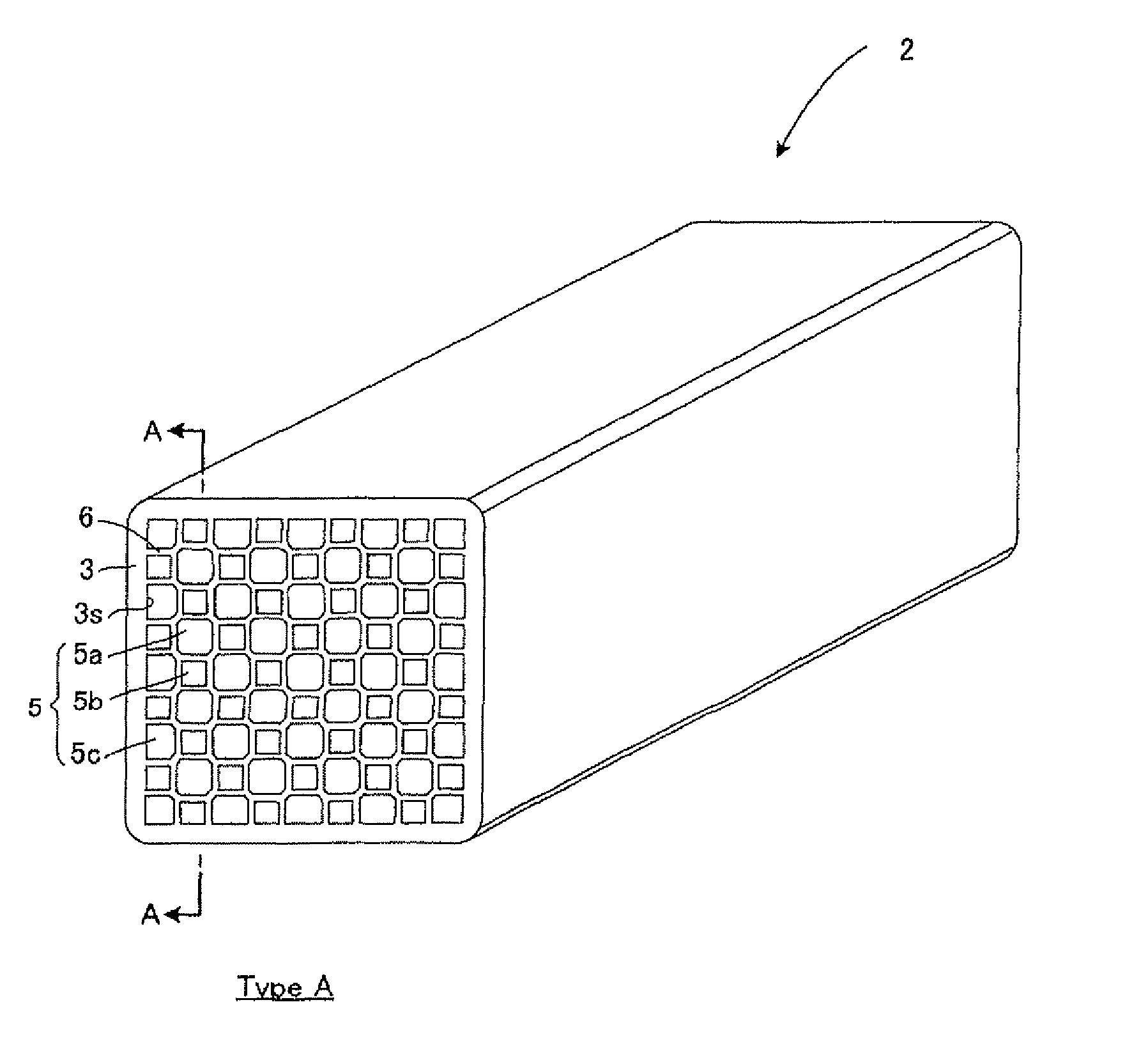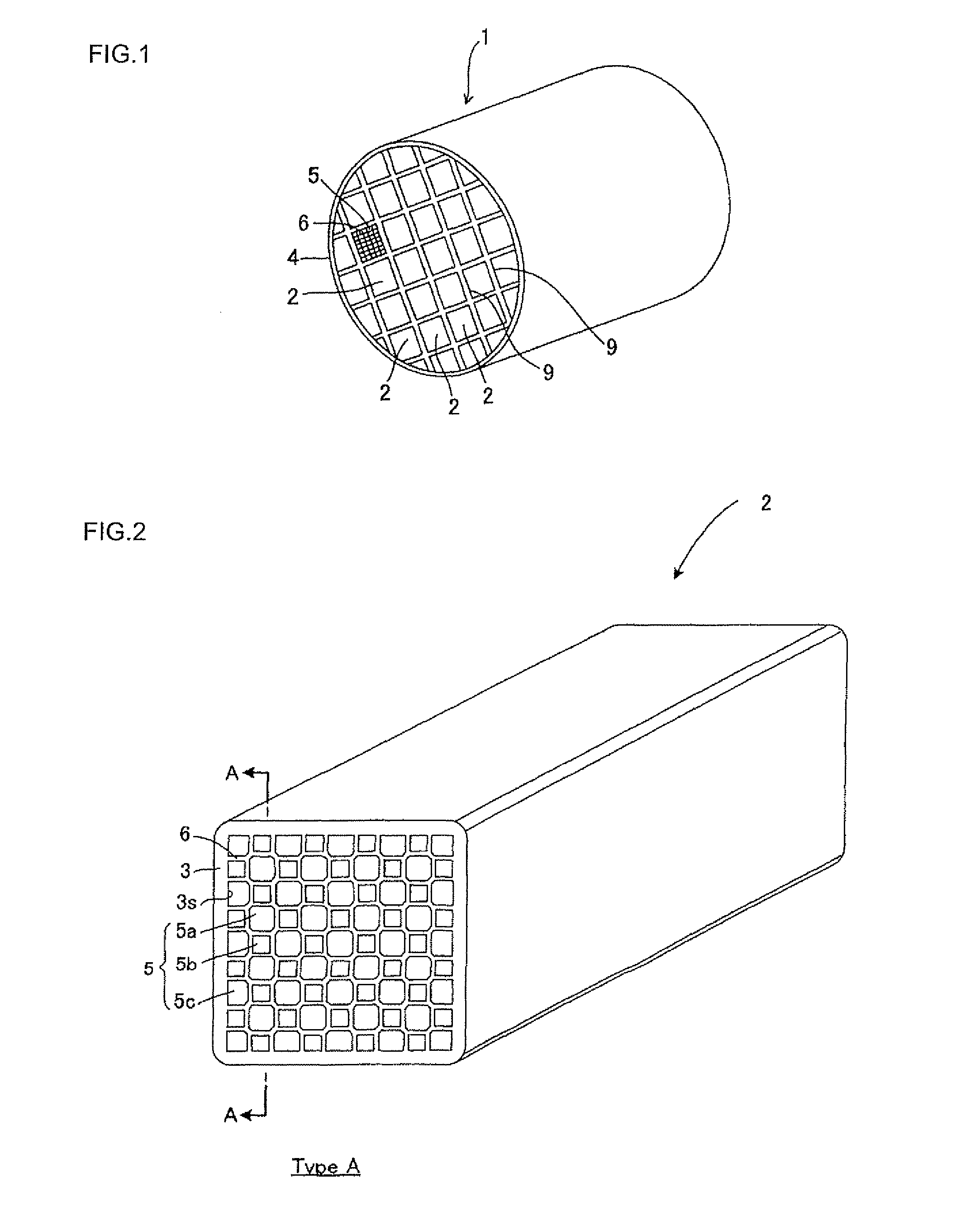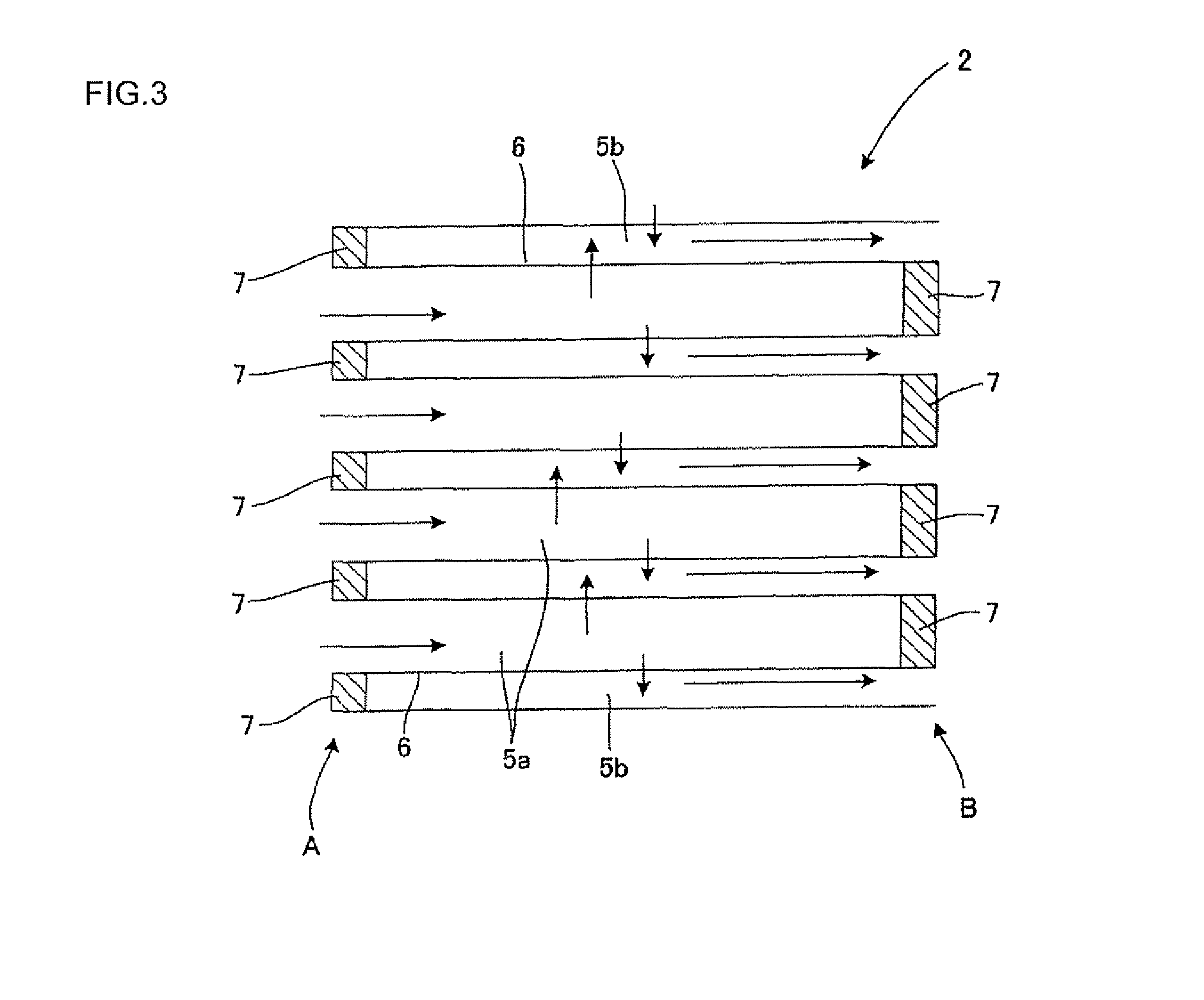Honeycomb segment
a honeycomb and segment technology, applied in the field of honeycomb segment, can solve the problems of low strength against thermal stress and rapid increase in pressure loss in the dpf, and achieve the effects of reducing porosity and pore size variance, uniform thickness, and improving bonding strength
- Summary
- Abstract
- Description
- Claims
- Application Information
AI Technical Summary
Benefits of technology
Problems solved by technology
Method used
Image
Examples
example
[0053]Hereinafter, the present invention will be described in more detail on the basis of Examples. However, the present invention is by no means limited to these Examples.
[0054]The honeycomb segment of the aforementioned Type A is prepared, and, as shown in FIG. 7, the bonding strength of the honeycomb segment was checked from the degree of change of the outer wall (X % of the thickness of the outer wall (wall thickness)) with respect to the designed value (standard thickness) W0. As shown in FIG. 8, the bonding strength was measured by four-point bending strength by preparing two honeycomb segments bonded together with a bonding material, supporting the honeycomb segments in the support portions, and applying pressure with an autograph so that stress was applied on the bonding portion.
[0055]The bonding strength ratio with respect to the variance in thickness is shown in FIG. 9. As shown in FIG. 9, when the variance in thickness exceeds 15%, the bonding strength is reduced. That is...
PUM
| Property | Measurement | Unit |
|---|---|---|
| thickness | aaaaa | aaaaa |
| area | aaaaa | aaaaa |
| cell structure | aaaaa | aaaaa |
Abstract
Description
Claims
Application Information
 Login to View More
Login to View More - R&D
- Intellectual Property
- Life Sciences
- Materials
- Tech Scout
- Unparalleled Data Quality
- Higher Quality Content
- 60% Fewer Hallucinations
Browse by: Latest US Patents, China's latest patents, Technical Efficacy Thesaurus, Application Domain, Technology Topic, Popular Technical Reports.
© 2025 PatSnap. All rights reserved.Legal|Privacy policy|Modern Slavery Act Transparency Statement|Sitemap|About US| Contact US: help@patsnap.com



